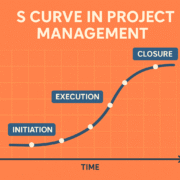10 Proven Time Management Techniques for Managing Multiple Projects
Introduction
If you’ve ever felt like you’re spinning plates while managing multiple projects, you’re not alone. Each plate represents a deadline, a client request, or a team deliverable—and if one falls, the whole performance suffers. Without a clear strategy, it’s easy to end up overworked, stressed, and running behind schedule.
The good news? By using proven time management techniques, you can keep every project moving forward without sacrificing quality—or your sanity. Let’s explore 10 powerful methods that can help you master managing multiple projects effectively.
The Importance of Time Management in Managing Multiple Projects
Managing multiple projects is more than just juggling tasks—it’s about making sure each one gets the attention it needs at the right time. Poor time management leads to missed deadlines, quality issues, and a constant feeling of playing catch-up.
When you manage your time well, you:
- Prioritize effectively so critical tasks are never left to the last minute.
- Reduce stress because you have a clear, achievable plan.
- Improve collaboration by keeping everyone aligned and informed.
10 Proven Time Management Techniques for Managing Multiple Projects
1. Time Blocking
Time blocking involves assigning specific blocks of time in your calendar for focused work on particular projects. Instead of reacting to tasks as they come, you proactively schedule when and how long you’ll work on them.
How to do it:
- Allocate chunks of uninterrupted time for each project.
- Include buffer time between blocks to handle unexpected issues.
- Use tools like Google Calendar, Outlook, or Notion.
Pro tip: Treat time blocks like meetings—non-negotiable unless there’s a real emergency.
2. The Eisenhower Matrix
The Eisenhower Matrix helps you decide what needs immediate attention and what can be scheduled, delegated, or eliminated.
Quadrants:
- Urgent & Important → Do now.
- Important but Not Urgent → Schedule.
- Urgent but Not Important → Delegate.
- Neither Urgent nor Important → Drop.
When managing multiple projects, this method ensures you spend more time on meaningful work rather than just firefighting.
3. The Pomodoro Technique
This technique uses 25-minute focus sessions followed by 5-minute breaks. After four sessions, take a longer 15–30-minute break.
Why it works for multiple projects:
- Prevents burnout during intense project phases.
- Breaks down large tasks into manageable bursts.
- Keeps your energy steady throughout the day.
4. Setting SMART Goals
SMART goals keep you grounded when managing multiple projects. Instead of vague objectives, you define:
- Specific – Clear and detailed.
- Measurable – Trackable with metrics.
- Achievable – Realistic within available resources.
- Relevant – Aligned with project priorities.
- Time-bound – Set deadlines.
SMART goals help prevent scope creep and ensure each project stays on track.
5. Priority Mapping
Priority mapping means visually ranking your project tasks to see where your time has the biggest impact.
Steps:
- List tasks for each project.
- Assign value based on deadlines, importance, and dependencies.
- Tackle high-value tasks first.
This approach keeps you from spending hours on tasks that don’t significantly move the project forward.
6. Task Batching
Task batching groups similar tasks together to minimize context switching—a productivity killer.
Examples:
- Respond to all emails in one block instead of scattering them throughout the day.
- Batch design work, content reviews, or coding tasks.
- Schedule all status meetings back-to-back.
7. Using Gantt Charts
Gantt charts give you a bird’s-eye view of timelines and dependencies across multiple projects.
Benefits:
- Spot overlapping deadlines before they become a problem.
- Track progress visually.
- Keep teams aware of their responsibilities.
Online tools like GanttPRO, ClickUp, or even Excel make creating Gantt charts easy.
8. The 80/20 Pareto Principle
Focus on the 20% of tasks that deliver 80% of your results. In multiple projects, this means:
- Identify key deliverables driving the most value.
- Reallocate time from low-impact tasks.
- Use this principle during project reviews to stay aligned with goals.
9. Weekly Project Reviews
Set aside time every week to assess:
- What’s been completed.
- What’s falling behind.
- Any scope changes or shifting priorities.
This habit prevents nasty last-minute surprises and keeps all projects aligned with deadlines.
10. Delegation and Outsourcing
When your plate is overflowing, delegation isn’t a luxury—it’s a necessity.
- Assign tasks to team members with the right skills.
- Use clear briefs and deadlines.
- Trust the process and avoid micromanaging.
Delegation ensures you focus your time on tasks that truly require your expertise.
Common Mistakes to Avoid When Managing Multiple Projects
- Overcommitting: Accepting more projects than you can realistically handle.
- Skipping breaks: Fatigue kills productivity and creativity.
- Ignoring shifting priorities: Projects evolve—your plan should too.
Tools That Can Help
- Task Management: Karya Keeper, Trello, ClickUp.
- Time Tracking: Toggl, Clockify.
- Scheduling & Planning: Google Calendar, Outlook.
- Visualization: GanttPRO, Smartsheet.
Conclusion
Managing multiple projects is challenging, but with the right time management techniques, it becomes a manageable—and even enjoyable—process. Start with one or two strategies from this list, refine them to suit your style, and watch your productivity soar while stress levels drop.




